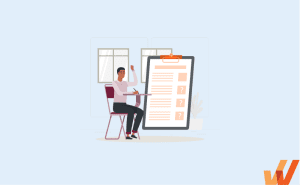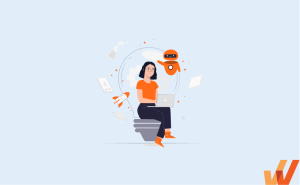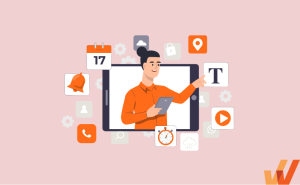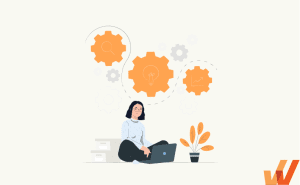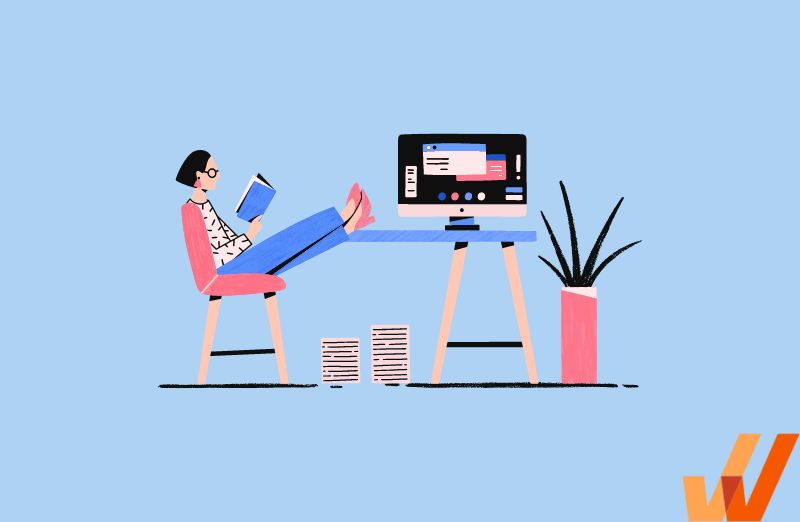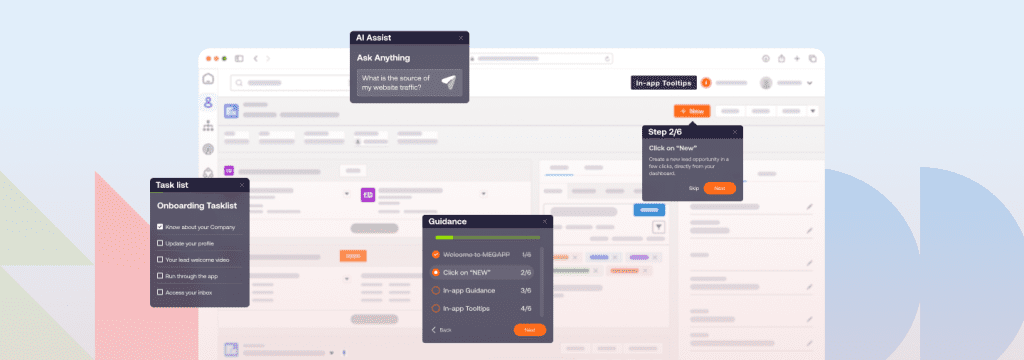Learning barriers keep employees from actively engaging in skills development and training. Overcoming these learning blockers is a critical focus area for L&D and HR professionals to drive knowledge acquisition and information retention so that employees can understand, absorb, retain, and put into practice.
Considering the labor shortage and the evolving skills required for modern workplaces, continuous learning, and professional upskilling are essential for keeping employees productive and developing talent from within.
But what is the right way to convey the need for corporate learning and development and employee reskilling, and how do you efficiently manage a corporate upskilling program? And how do you overcome common learning barriers you’ll encounter?
What are the most common learning barriers?
Types of Learning Barriers
There are three main types or categories of learning barriers – emotional, motivational, and personal barriers. Let’s explain each of them.
1. Emotional barriers
Emotional barriers come from deep within a person, sabotaging the learning process. When you deal with an emotional learning barrier, you might consciously be aware of the importance of the learning process, but you’re often unable to get rid of the underlying fear or doubt.
A few examples of motivational barriers include:
- Resistance to change
- Fear of failure
- Peer pressure
- Lack of focus
2. Motivational barriers
Adults have lost the curiosity and desire for learning that children naturally possess. Now, we need a pretty good “reason” to convince us that this learning experience is required and will result in a desirable outcome. Motivational learning barriers often result in missing training sessions or simply not showing interest in self-improvement.
A few examples of motivational barriers include:
- Lack of previous knowledge
- Failing to grasp the importance of the training
- Lack of clear goals
3. Personal barriers
Lastly, we have personal barriers. These learning obstacles refer to a person’s learning process and the best ways for them to receive and retain new information.
A few examples of personal barriers include:
- Different learning styles: Some people are better at processing and remembering data visually, while others turn to their numerical or auditory brain section to memorize information.
- Physical or neurological impairment: If a person has difficulties hearing, speaking, or seeing, you should adjust the learning process accordingly and find a different (better) way of conveying your message.
Intrinsic vs. Extrinsic Barriers to Learning
We can further divide learning barriers into two categories: intrinsic and extrinsic obstacles.
- Intrinsic barriers come from within while extrinsic ones are due to external factors, outside of the learner. Intrinsic barriers include physical, neurological, psychological, and sensory impairments that result in diminished intellectual capacity.
- Extrinsic barriers are external elements that impact the learner’s ability to focus or absorb information. For instance, inadequate parental involvement, problems in the family, and other socio-economic factors are extrinsic barriers to learning.
10 Common Learning Barriers in the Workplace
Now, let’s examine ten of the most common barriers to learning in corporate settings and learn practical strategies for overcoming them.
1. Resistance to change
Type of barrier: Emotional
Resistance to change is the first emotional learning barrier we’re going to discuss – it was something we saw as companies moved to work-from-home setups with employees refusing to adopt necessary online processes and tools critical for remote work.
This resistance to change often appears as resistance towards adapting to new technology or, in some cases, resistance to stop doing things the “old way” and try something more efficient but unfamiliar.
How to overcome this learning barrier
Understanding the importance of getting out of their comfort zones and keeping an open mind for upskilling and cross-skilling will help your staff eliminate their resistance to changes.
You can try:
- Showing statistics, results, and solid proof that the new way is the better way of doing things.
- Supporting your staff during the transition period.
- Providing enough onboarding materials and tutorials to help them adapt and navigate new tools with ease
- Implement an adaptive learning platform that helps meet the specific needs of each learner
2. Peer pressure
Type of barrier: Emotional
Peer pressure is an emotional learning barrier that we often compare to light bullying for adults. In the workplace, this often appears as senior management pressuring subordinate-rank staff to undertake courses or go through training as a must, without explaining the feasibility or benefit to the employee.
Another type of peer pressure is an employee attending training they don’t have to just to not feel left out.
How to overcome this learning barrier
Peer pressure is always difficult to overcome, as most social-related barriers are. Here are some tips to help you ensure there’s no peer pressure at your workplace:
- Survey your employees on what they expect to learn or get out of this course.
- Ask about their reasons for joining the training.
- Explain in which way the course relates to different job roles.
- Reassure the learner that the training is optional and individual.
3. Fear of failure
Type of barrier: Emotional
Fear of failure is another one of those deep-rooted emotional barriers to learning that often stems from an unresolved and unpleasant experience. In this scenario, the learner is full of self-doubt and is convinced that they won’t be able to understand the new information or learn the new skill.
Often, people find safe harbor in doing what they know best and miss out on learning new things or trying their luck at a different job. They’re afraid to exit their comfort zone due to fear of the unknown and, most of all, fear of failure.
How to overcome this learning barrier
For employees who have a fear of failure and are self-conscious about their performance, your goal should be to take their minds off what’s at stake and make the entire process fun instead of scary. For instance:
- Try gamification in the form of certificates or contests to put a fun spin on an otherwise dull training session.
- Reassure the employee that it’s normal, even expected to make mistakes during the learning or “test” period.
- Foster a learning and positive reinforcement culture where employees aren’t afraid to ask questions and make mistakes.
- Nurture two-way communication and be available for support and questions that might arise.
4. Lack of focus
Type of barrier: Emotional
Learning in the workplace is challenging regarding focus and finding an environment without interruptions. Lack of focus is another learning barrier in the category of emotional obstacles. The prevalence of ADHD in adults also challenges L&D professionals to overcome, as each employee may be predisposed to a lack of focus.
Additionally, the use of smartphones and other digital devices nowadays has lessened the attention span of your employees. Maintaining uninterrupted focus on one task for prolonged periods can prove challenging.
How to overcome this learning barrier
If lack of focus is what you’re dealing with, here are some tips to try:
- Secure a silent and isolated space for your training sessions that’s free of noise or interruptions from other employees.
- Establish a “no phone” rule during your training sessions (and make it engaging enough to be worth it.)
- Reserve a training slot in your employees’ calendars in advance.
- Use diverse course formats and learning methods to keep engagement and avoid boredom. We recommend exploring VARK’s multimodal learning model.
5. Lack of goals
Type of barrier: Motivational
All effective L&D strategies include ways to motivate and engage the employees. One of these ways is often setting SMART goals. This works because having something to work for or aim to reach is at the base of human psychology.
No goals = procrastination. Goals = motivation and productivity.
Managers often struggle to set concrete objectives to reach or develop ones that are too far in the future or difficult to grasp. This makes the goals inefficient in providing sufficient motivation for learning.
How to overcome this learning barrier
To ensure lack of goals isn’t what keeps your employees unproductive and unmotivated, always set clear and achievable goals. Your professional development team is of utmost importance for scaling and growing your business without wasting overhead resources. So, we recommend setting both corporate goals as well as personal development or learning goals.
If you aren’t sure if you’ve set goals that are clear enough, ask yourself these questions:
- How will I measure the completion of the process (KPIs)?
- What new skill should the employee have after this training?
- How will they implement this skill in the workplace?
- What is the benefit of this course for the employee?
6. Lack of previous knowledge
Type of barrier: Motivational
Lack of previous knowledge is a motivational obstacle that can make a person completely lose their will to learn. This often happens with employees attempting to switch careers or learn an unfamiliar skill from scratch. In this scenario, the learner is overwhelmed and feels lost in the subject. It becomes difficult to believe they could ever understand what they’re being taught.
How to overcome this learning barrier
Try some of these practices to fight the loss of learning motivation caused by a lack of previous knowledge:
- Let the employee know that your expectations are low and they have the time to move at their own pace.
- Reassure them that the learning process comes in stages and that soon they will understand the logic behind it.
- Find ways to incentivize or reward achievements as they happen to boost motivation.
- Build a well-structured course that starts at the beginning level and prepares the employees for what’s ahead or for more advanced modules.
7. Not understanding the importance of the training
Type of barrier: Motivational
No matter how many excellent employee engagement ideas you implement to make staff more interested in their training, it won’t work until they can understand its importance logically. You tell them that it’s essential that they are present and learn these new skills. But why should they? What’s in it for them? Understanding the importance of the training or upskilling is crucial for ensuring your staff is 100% and uses their full potential.
How to overcome this learning barrier
Here’s how to effectively explain the importance of a course or training:
- Show in practice what they will be able to do after finishing the course.
- Provide a course outline with the main topics the course will cover.
- Give practical and measurable benefits (for instance, the course will help you boost your sales and commission numbers by 35%.)
- Connect the training to specific workplace-related outcomes and improvements.
8. Course format
Type of barrier: Personal
The next type of personal barrier is the course or training format. This is the way you choose to transfer information memorably. Improving learning retention is the main goal, so you should carefully consider individual learning style preferences.
Simply put, choosing the best course format will allow your staff to understand, process, and memorize the new information you’re trying to convey. In practice, this may include videos, webinars, slide presentations, images, graphs, process documentation, flowcharts, and more. Consider this when designing training materials.
How to overcome this learning barrier
Here are some tips to help you adjust the course format and design and more pleasant and efficient learning experience for your employees:
- Send out a survey to your staff and ask what’s the best way for them to learn new information.
- Make the course or training interactive to avoid boredom and lack of engagement.
- Present the same information in different ways. For instance, show numbers in a table as well as a graph to help your staff remember the information visually.
- Incorporate a mixture of theory and practice to ensure that your employees have understood and can implement what you’re trying to teach them.
9. Generic learning experience
Type of barrier: Personal
Everyone has a different learning style and is equipped to process information and data differently. Some people find it easier to memorize visual information, some have an auditory predisposition to memorize, others need to find the logic behind things, and so on. Everyone’s different.
As a result, learning experiences that are missing personalization are often unpleasant and produce fewer results than personalized experiences. And this just deals with people’s learning preferences, not their personalized role in a company.
How to overcome this learning barrier
Your goal should be to focus on customized employee training software and next-gen learning solution. For instance:
- Design interactive courses in diverse formats such as video, visuals, infographics, text, quizzes, and other forms of gamification in the learning process.
- Implement user-friendly L&D tools as a roadmap to the learning process, a way to track progress, and for allowing learning flexibility at the pace of your employees.
- Explore new learning technologies such as learning experience platforms (LXPs) and digital adoption platforms (DAPs) to create contextual learning paths and experiences.
- Aim for a more hands-on, practical learning experience.
- Have one-on-one talks and discuss your staff’s learning preferences.
10. Accessibility and impairments
Type of barrier: Personal
Lastly, you need to consider the so-called intrinsic barriers to learning, including all kinds of physical and neurological disabilities or impairments. In this category are all hearing and visual impairments and learners that suffer from dyslexia or are on the autism spectrum.
These categories require adjustments in the course format and how information is being transmitted to be best received by the learners.
How to overcome this learning barrier
Here are some tips to help you design inclusive courses and training:
- Provide captions or subtitles on all videos for those with impaired hearing.
- Add alt-text to images and use visuals with good contrast.
- Provide audio recordings in place of text for the visually impaired.
- Allow more learning time and be patient with learners that suffer from ADHD, dyslexia, or similar conditions that make it more difficult to process and retain information.
Training Clicks Better With Whatfix
With Whatfix, L&D teams are empowered to create contextual role-based learning experiences that provide moment-of-need training and on-demand performance support to employees.
With Whatfix’s in-app guidance, employees learn in the flow of work with interactive walkthroughs, step-by-step flows, task lists, smart tips, self-help wikis, and more.
You can learn more about digital adoption platforms now!
